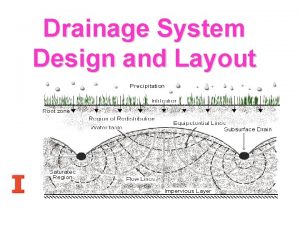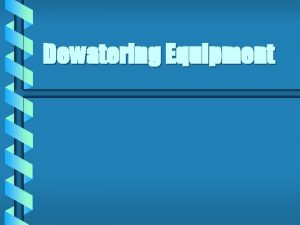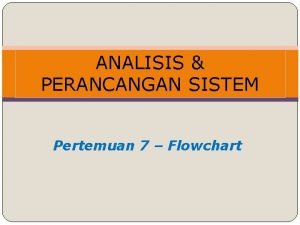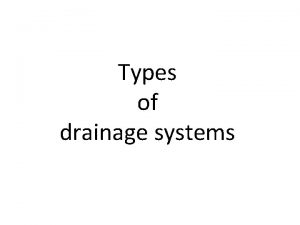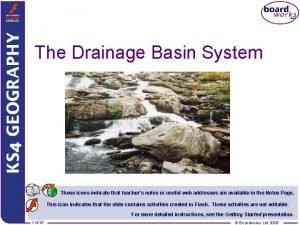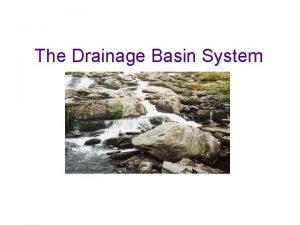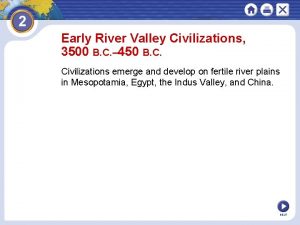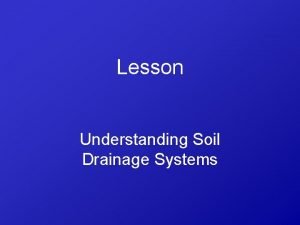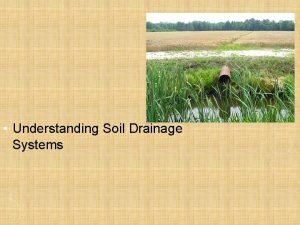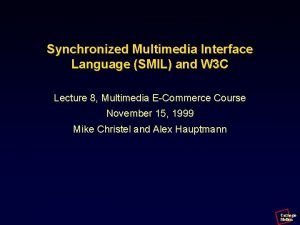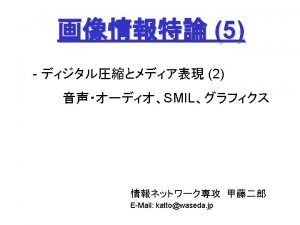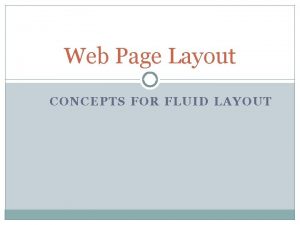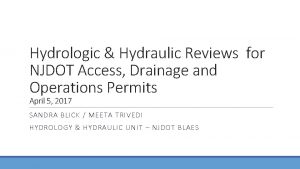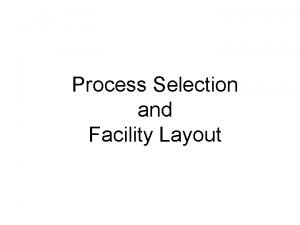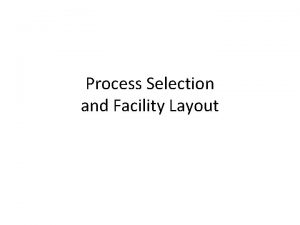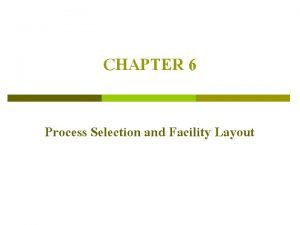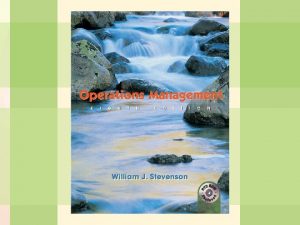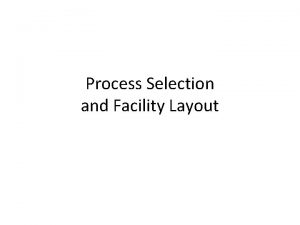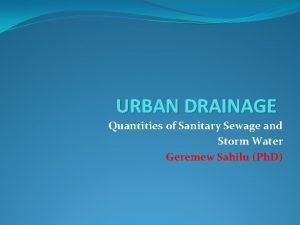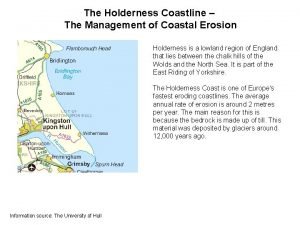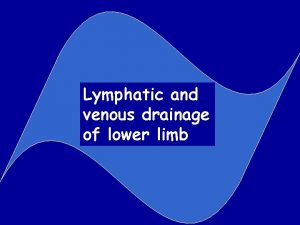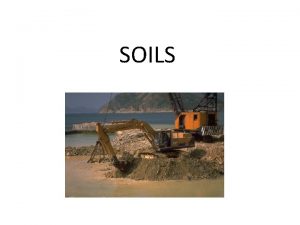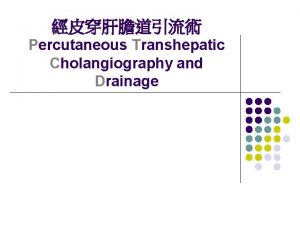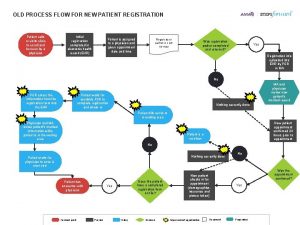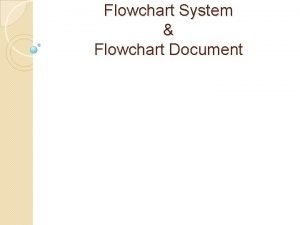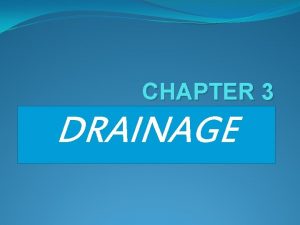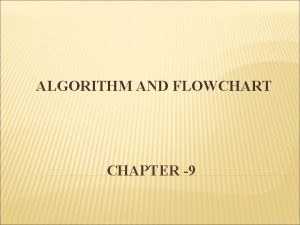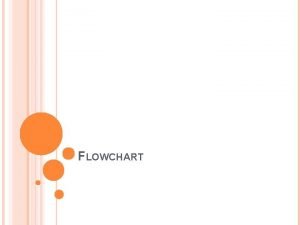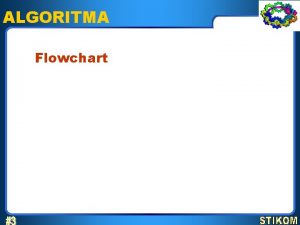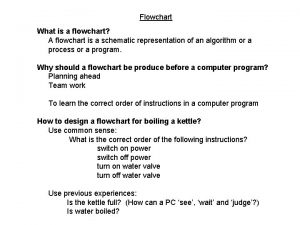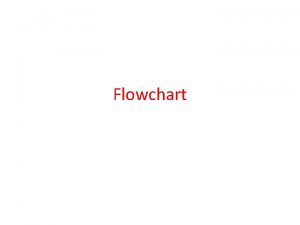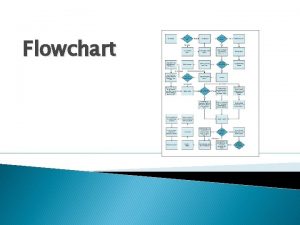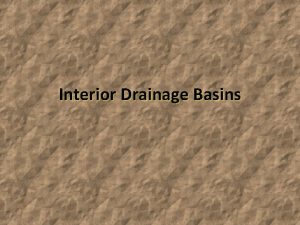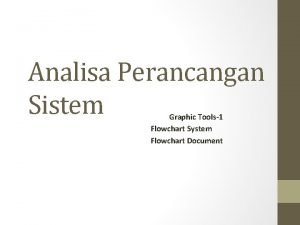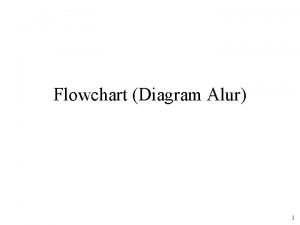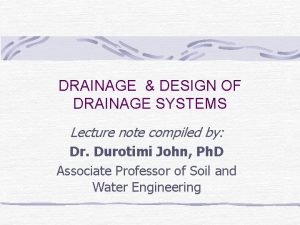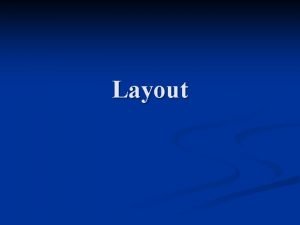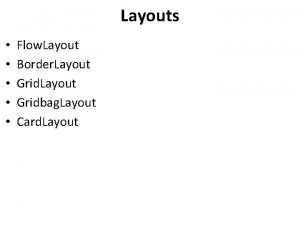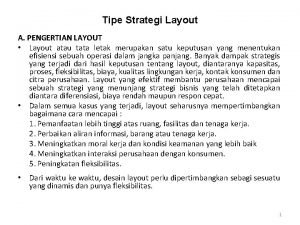Drainage System Design and Layout Design Process Flowchart








































- Slides: 40

Drainage System Design and Layout

Design Process Flowchart Background Information (Soils, Topo, Crops) Drainage Needed NO Confirm Outlet NO Select DC, Spacing & Depth Determine Drain Sizes Installation Develop System Layout Determine Grades & Depth

Design Process Flowchart Background Information (Soils, Topo, Crops) Drainage Needed NO Confirm Outlet NO Select DC, Spacing & Depth Determine Drain Sizes Installation Develop System Layout Determine Grades & Depth

Drainage Outlets

Design Curves Outlet channels designed according to Curve B will provide excellent agricultural drainage in Illinois. Use this curve for drainage of truck crops, nursery crops, and other specialty crops. Designs based on curve B will provide the best drainage that can normally be justified in agricultural

Design Curves Channels that are designed according to curve C will provide good agricultural drainage in Illinois. This curve is the one most often recommended for drainage of

Drainage Outlets Designs based on curve D provide satisfactory agricultural drainage as long as frequent overflow does not cause excessive damage. This curve is generally recommended for pasture or woodland. It may also be adequate for drainage of general cropland in northern Illinois, provided that the landowner carries out an excellent maintenance program. Designs based on curve D provide the minimum amount of drainage recommended in Illinois.

Design Curves Drainage Curve CFS/ 100 Acres Acre In/Day (Drainage Coefficient) B 20 4. 8 C 8 2. 0 D 5 1. 2 For comparison: For a 100 acre watershed, RCN = 75, Avg. Slope = 1% in Central Illinois A 2 Yr. , 24 Hr. Rainfall yields 1” of Runoff and would result in a Peak Flow of 30 CFS. A 10 Yr. , 24 Hr. Rainfall yields 2” of Runoff and would result in a Peak Flow of 70 CFS.

Ditch Configuration Once you know what the capacity of the outlet channel must be, you need to determine the size that will enable it to convey the desired amount of flow without letting the water surface rise above a predetermined. elevation. The following sections describe some basic hydraulic concepts that will help you design a channel of the proper size

Outlet Ditches Velocity The velocity of water flow must be high enough to prevent siltation in the channel but low enough to avoid erosion. Listed on the next page are the maximum velocities for drainage areas of 640 acres or less. The velocity should be no lower than 1. 5 feet per second. A lower velocity will cause siltation, which encourages moss and weed growth and Soil Texture Maximum Velocity (ft/sec) Sand or sandy loam Silt loam Sandy clay loam 2. 5 3. 0 3. 5 Clay loam 4. 0 Clay orsilty clay 5. 0 Fine gravel, cobbles, or graded loam to cobbles Graded mixture silt to cobbles Coarse gravel, shales, or hardpans 5. 0 5. 5 6. 0

Hydraulic Gradeline

Channel Velocity The most widely used equation for designing outlet channels was developed by Robert Manning in 1890 and is known as Manning's equation: where V = average velocity of flow (ft/sec), n = coefficient of roughness, R = hydraulic radius (ft), s = slope of hydraulic gradient (ft/ft).

Manning Routine

Design Process Flowchart Background Information (Soils, Topo, Crops) Drainage Needed NO Confirm Outlet NO Select DC, Spacing & Depth Determine Drain Sizes Installation Develop System Layout Determine Grades & Depth

Drainage Coefficient

Design Process Flowchart Background Information (Soils, Topo, Crops) Drainage Needed NO Confirm Outlet NO Select DC, Spacing & Depth Determine Drain Sizes Installation Develop System Layout Determine Grades & Depth

Drain Spacing & Depth • Design for uniform depth throughout system (depends on layout) • Depth will of course vary on flat and rolling topography

System Layout

System Layout

System Layout

Contour Map

System Layout Cost Differential: $50/acre

Design Process Flowchart Background Information (Soils, Topo, Crops) Drainage Needed NO Confirm Outlet NO Select DC, Spacing & Depth Determine Drain Sizes Installation Develop System Layout Determine Grades & Depth

Drain Sizing Tool

Result Display

Materials

Drainage Materials

Drainage Materials

Drainage Coeff.

Drainage Coefficient

Design Criteria

Tile Mathematics 10 = 3 x 6 12/2 = 8

Sedimentation Options

Design Chart

Can be Saved

Lateral Specification

Lateral Specification


Inlets

Questions?
 Layout of drainage system
Layout of drainage system Drainage system layout
Drainage system layout Venous drainage of brain flowchart
Venous drainage of brain flowchart Enabling objectives
Enabling objectives Flowchart analisis
Flowchart analisis Structure chart in system analysis and design
Structure chart in system analysis and design Two pipe system
Two pipe system Drainage basin system
Drainage basin system Hydrograph
Hydrograph Golf course drainage
Golf course drainage Drainage system in harappan civilization
Drainage system in harappan civilization Double main drainage system
Double main drainage system Double main drainage system
Double main drainage system Olmec drainage system
Olmec drainage system Numerator vs denominator layout
Numerator vs denominator layout Smil head layout root-layout
Smil head layout root-layout Cddat
Cddat Fluid layout vs fixed layout
Fluid layout vs fixed layout Njdot drainage design manual
Njdot drainage design manual Resourcing strategy
Resourcing strategy Importance of process selection and facility layout
Importance of process selection and facility layout Process matrix
Process matrix Chapter 6 process selection and facility layout
Chapter 6 process selection and facility layout The main issue in designing process layouts concerns what
The main issue in designing process layouts concerns what Process selection and facility layout
Process selection and facility layout Process selection and facility layout
Process selection and facility layout Types of forms in system analysis and design
Types of forms in system analysis and design Lymphatic drainage of legs
Lymphatic drainage of legs Fanning formula
Fanning formula Holderness coastline map
Holderness coastline map Posterior arch vein
Posterior arch vein Water cycle inputs
Water cycle inputs E horizon
E horizon Retention and drainage
Retention and drainage Bile color
Bile color Cliff drainage diagram
Cliff drainage diagram What is process modeling in system analysis and design
What is process modeling in system analysis and design Split range
Split range Safeguarding referral flowchart
Safeguarding referral flowchart Process analysis
Process analysis User registration process flow diagram
User registration process flow diagram

